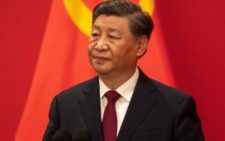The true cost of Kenya’s rushed digital reforms

On July 1, 2025, Kenya fully deployed its Electronic Government Procurement (e-GP) system, ending manual tendering and mandating online procurement across all national and county entities.
The platform, backed by the National Treasury, World Bank, and International Monetary Fund (IMF)-linked fiscal reforms, cost Ksh560 million and is projected to save up to Ksh100 billion annually through fraud reduction and efficiency gains.
The system was designed to manage the entire procurement lifecycle—from supplier registration and tender publishing to contract execution and payment—within a single digital interface.
With procurement accounting for over 30 per cent of government expenditure, the stakes were high. The government framed the e-GP as a leap into transparency. Instead, it has become a case study in rushed digitisation and institutional disruption.
Just days before the deadline, the Public Procurement Regulatory Authority issued Circular No. NT/PPD 1/3/14 VOL VI suspending all tenders and contract awards outside the e-GP platform.
That abrupt order halted procurement nationwide. Projects in roads, schools, healthcare, and infrastructure were frozen. Counties were told to comply immediately—regardless of connectivity, training, or readiness.
In areas like Tana River, Kakamega, and Isiolo, procurement officers were left without functioning systems. Suppliers in rural constituencies reported login failures, language barriers, poor internet access, and no offline alternative.
Many had not received e-GP credentials or system training. Women- and youth-led businesses, already struggling to win public tenders, found themselves excluded altogether.
Informal contractors were digitally erased overnight.
Government officials claimed support systems were in place: webinars, helpdesks, Huduma Centre walk-ins, and technical staff at county offices. But that infrastructure was patchy and arrived late.
The pilot phase only began in April 2025.
Mandatory adoption began in July. Many counties had less than four weeks to train staff, onboard suppliers, and adapt to a radically different process.
In Turkana, youth contractors who rely on mobile phones to bid were unable to access the site.
In Nyamira, procurement staff described working overnight to resolve technical crashes, often without any live system support.
The law is even less forgiving. The Public Procurement and Asset Disposal Act (2015) assumes paper-based appeals, manual tender evaluation, and a hybrid process.
It does not account for platform failure, server outages, or algorithmic bid scoring. There is no legal clarity on how to handle disputes arising from missed digital deadlines.
Suppliers whose bids fail to submit due to a system crash have no recourse. This legal vacuum leaves both bidders and buyers exposed to conflict and litigation.
The centralisation of data within the e-GP platform introduces another risk: opacity under the guise of efficiency.
Contract histories, bid prices, and evaluation reports are now stored inside a system with no public audit interface, no published cybersecurity review, and no clarity on data control or manipulation safeguards.
Kenya has digitised its procurement secrets and put them behind a login screen. Transparency without access is theatre.
Compare Kenya’s approach to other nations. South Korea, Chile, and Rwanda introduced e-procurement systems gradually.
They piloted modules, tested usability, introduced hybrid models, and built legal and human infrastructure around the technology.
Kenya, by contrast, enforced a nationwide transition after a short pilot, no public readiness assessment, and limited testing. It chose enforcement over adaptation. The result is exclusion by design.
Women-led businesses, SMEs in informal settlements, rural contractors and youth-led startups were shut out by a system they never got the chance to understand. Procurement officers, many close to retirement, are navigating a portal with limited training and no backup process.
Service delivery is being held hostage by a system that doesn’t understand the people it was built to serve.
This is not a rejection of digital reforms. It is a rejection of authoritarian rollout. If Kenya wants to fix public procurement, it must pause and realign.
The July 1 cutoff should be suspended and replaced with a staggered transition plan based on infrastructure and institutional capacity.
Training must go beyond webinars to include local ICT desks, field support, and offline registration.
Procurement law must be amended to recognise digital failure, define appeal processes, and clarify data governance.
And the platform itself must be opened to external audit, civil society oversight, and user-centred redesign.
The e-GP is not the problem. Poor implementation is. If Kenya insists on automating dysfunction and calling it reform, it will not only lose billions—it will lose public trust. There is still time to course correct. But not much.
The writer is a Global AI and Climate Policy Strategist and AI Researcher @UNEP















